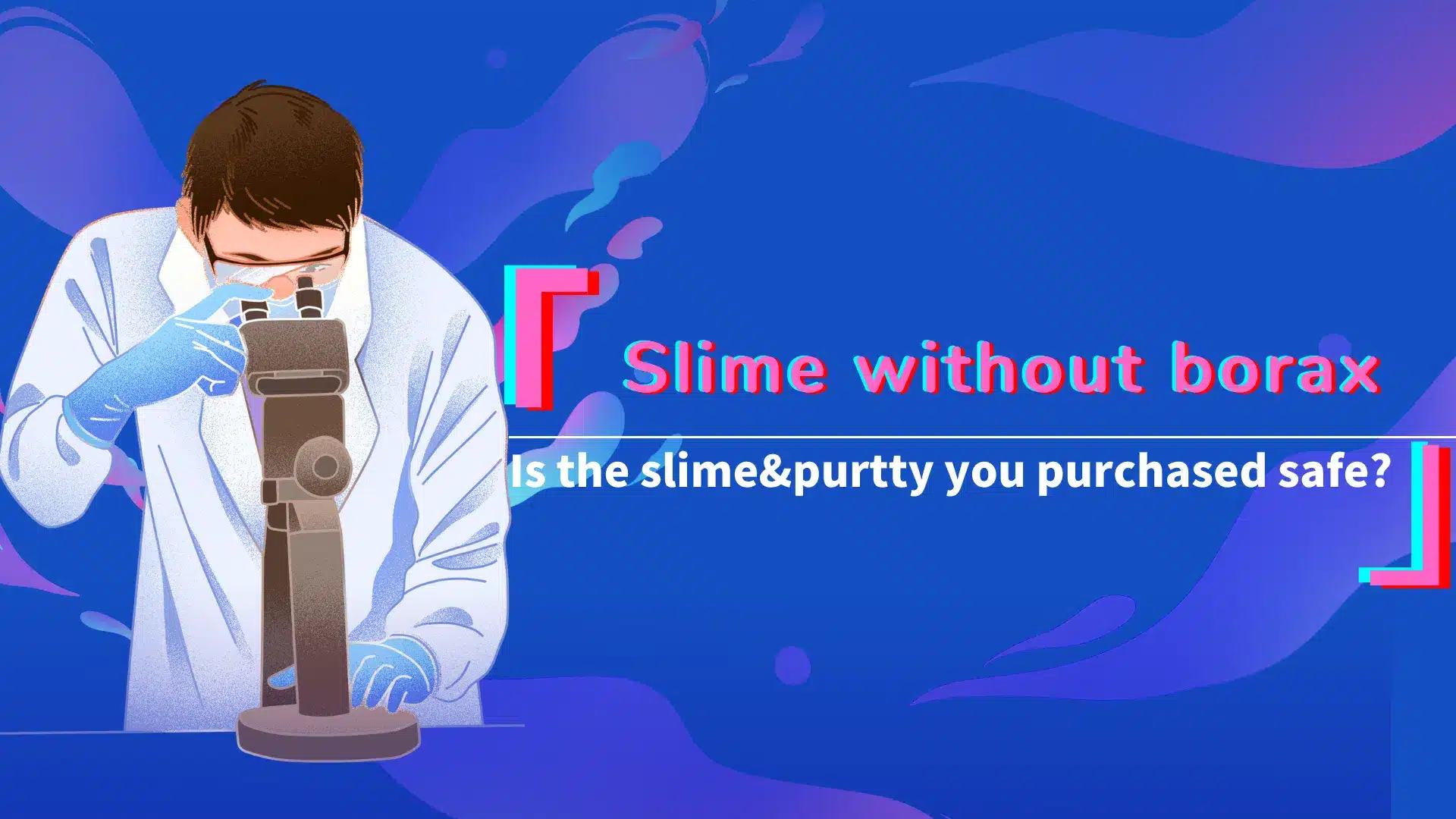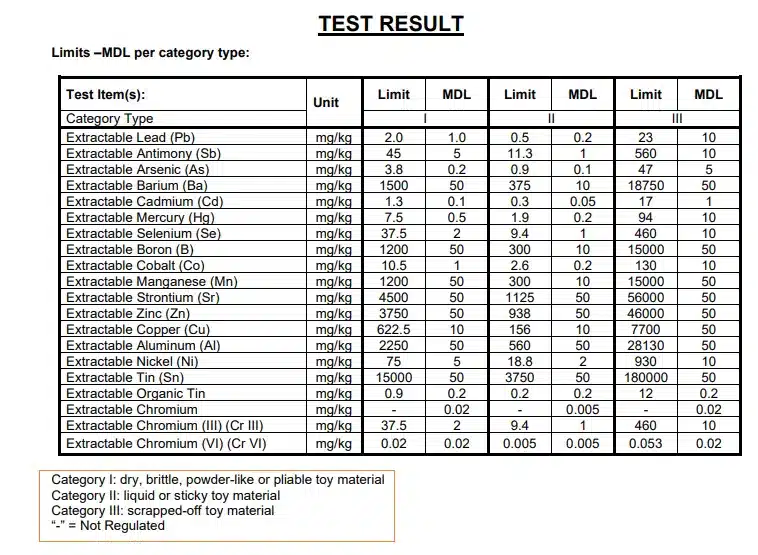
Is slime safe or toxic? Slime without borax? Here’s slime toy business guidance if you’re ready to sell slime or slimy toys. In this post, you will learn a safe perspective on slime and how to choose a slimy toy that is available for sale that complies with the regulations in your country.
Is slime safe or toxic? Why do consumers need slime without borax? If you’re ready to start a slime business, here’s what you need to know.
Many countries have established safety regulations for these products, and production companies must ensure that their products meet relevant standards before being sold in the region. Manufacturers must be held responsible for accidents caused by manufacturing defects, poor design, or the use of inappropriate materials.
So, all toys sold must comply with local regulations to ensure children’s health. Different types of toys need to meet various standards. For common requirements: lead, lead in paint, phthalates, small parts, and tracking labels. However, there are specific measurement criteria for the properties of slimy toys: borax, heavy metal content, bacterial testing, preservative testing, and boron content.
Q: What’s the Slimy toy?
A: Such as Slime, Thinking putty(Silly putty), Playdough(Air dry putty), Sand. Various slimy gel or paste toys.
Before selling Slime toys, you must first understand the toy standards in the local market.
If there are no regulations in your selling area, you can find them on the local government or Toy Association websites.
Third-party testing companies can provide testing and certification. Usually, manufacturers will do basic testing on their products. For example, we will provide primary EN71-1-2-3 test results[link:], which meet the sales requirements in most regions.
Most slimy toys contain boron, such as slime, butter slime thinking putty, and even slimy toy sand. Boron retains moisture and increases flexibility, producing a soft, malleable, semi-liquid or paste-like state. Boric acid, borax, or other Boron compounds may be added as additives to slimy toys because they all contain boron.
So what we really care about is Boron and not Borax.
Most slimy toys contain boron, such as slime, thinking putty, and even slimy toy sand. Boron retains moisture and increases flexibility, producing a soft, malleable, semi-liquid or paste-like state. Boric acid, borax, or other Boron compounds may be added as additives to slimy toys because they all contain boron.
Ingesting large amounts of boron in children can cause poisoning, which can be fatal in severe cases.
Q: How does boron cause poisoning in children?
A: A child accidentally eats a toy. If the sticky product is fragrance with chocolate, strawberry, candy, etc., the child may mistake it for food, leading to accidental ingestion poisoning. The purpose of adding perfume is usually to mask the pungent odor of a product. And not all scents are safe. Regarding fragrance or scents, you can read this article:How-to-add-scent-to-slime.
There is no requirement for boron content in American ASTM F691. But most US sellers are also aware of this security issue. Among my clients, they proactively ask to ensure that the added boron content is within safe thresholds (<1200PPM).
In the Migration of Certain Elements of EN71-3, there are precise requirements for boron content. However, there are three standards: 0 content, less than 300PPM, and less than 1200PPM. As sellers, which criterion should we follow?
In a formal third-party test report, we see a note:

The answer depends on the product you are selling. Yes, most slimy toys can be classified in Category I and II. A few DIY toys are classified in Category I.
So, how are they classified?
Crystal putty, slime, slime putty, air dry clay, play dough, and other slimy toys like snot, jelly, and pudding. Its main feature is that it contains water. It can be classified in Category II: liquid or sticky toy material. Because the water-containing characteristics make boron migration easier, free(extractable) boron content must be below 300 PPM.
Thinking putty, silly putty, play sands, foam putty, and other paste-like slimy toys. Its main feature is that it does not contain water. It can be classified in Category I: Dry, brittle, powder-like, or pliable toy material. Among them, the boron element is difficult to migrate to human skin, so the testing requirements for free boron are more relaxed.
Are there No-boron slimy toys?
*Of course, we can also produce Slime without borax*
At this point, the usual test of Slimy is over.
Maybe you have encountered slimes that turned into water or grew mold after playing for a while. Some customers reported that the skin on their hands became allergic after playing with slime. These problems are related to bacteria, preservatives, or fragrances.
Related tests:
United States Pharmacopoeia Microbiology Test USP51+52 and USP61+62
European Pharmacopoeia: Microbiological Safety Requirements in Protocol No. 2
EN 71 -7 -9 -12
These tests can more effectively protect children’s safety. However, these tests are costly and are usually performed before purchase or on a sample basis for testing in bulk.
Thank you for reading this. If you need help, don’t hesitate to contact me.
FindUwant Toy–Leading manufacturer of Custom Slime &Putty &Clay & Sands Toy
1 ISO 8124-1:2018 – Safety of toys — Part 1: Safety aspects related to mechanical and physical properties ↩
3 F963 Standard Consumer Safety Specification for Toy Safety (astm.org) ↩
4 The Consumer Product Safety Improvement Act (CPSIA) | CPSC.gov ↩
5 Industry Guide to Health Canada’s Safety Requirements for Children’s Toys and Related Products – Canada.ca ↩
6 The European Union promulgated the Toy Safety Directive 88/378/EEC in 1988. It required EU countries to write this regulation into their respective countries’ corresponding laws and regulations within a specific period to control toy safety better. As a result, rules such as the British BS EN71, the French NF EN71, and the German DIN EN71 appeared accordingly. ↩
8 The Australian/New Zealand toy standard AS/NZS ISO 8124 is revised based on the international standard ISO 8124. The requirements of ISO8124 are consistent with the needs of the European Union EN71. So, you can refer to the EN71 standard. AS/NZS ISO 8124.1:2023 Safety of toys, Part 1: Safety aspects related to mechanical and physical properties | Standards Australia Store ↩